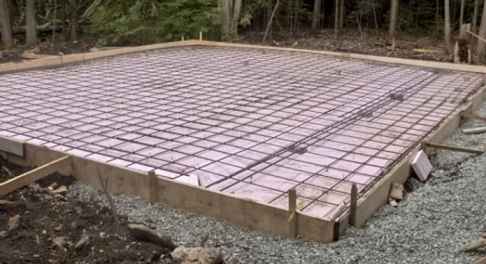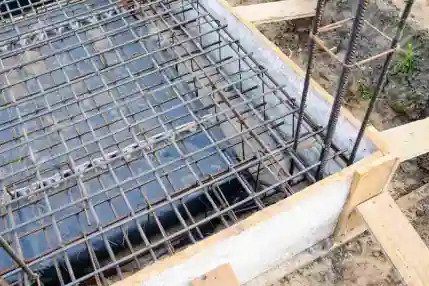A monolithic slab is a basic building structure constructed with a single concrete pour that includes a 4-inch-thick concrete slab while a floating slab is a concrete slab constructed over the surface without any type of anchoring, it continues to float over it.
Here are some of the main differences between monolithic and floating slab to help you understand how both differ:
Monolithic Slab Vs Floating Slab- Differences:
Monolithic Slab:
The name “Monolithic” means “all in one pour,”
The foundations of a Monolithic Slab are made up of a concrete slab with a thicker region beneath the load-bearing walls and all the boundaries of the perimeter to start replacing the foundation in a once pour.
Since the concrete in a Monolithic Slab is poured all at once, the building is faster and labor costs are lower.
When utilized correctly, Monolithic Slabs can be durable as Stem-Wall Slabs.
In most sub-division communities, the earth is levelled and dirt is equally distributed over the land, resulting in a tightly compacted region.
If all of the final floor altitudes are the same and the slope is relatively gradual, a Monolithic Slab may be the best alternative.

Construction Monolithic Slabs:
The monolithic structure denotes the whole structure including the slab is cast at the same moment.
We required formwork to build a monolithic building, it is a popular alternative for step-wise foundations.
Instead of separating the foundation into sections, monolithic slabs unite the concrete slab and the foundation footings into a single component.
Users will pour the slab and the foundation at the same time that allows you to complete your chores quickly.
Monolithic foundations are substantially thinner than more traditional foundations.
The footings for such foundations are normally 12 inches long from the base to the floor, and the foundation is roughly four inches thick.
While certain specialized digging equipment may be used to investigate into the dirt quickly, most digging can be done by hand because you only need to dig a few inches into the ground.
Similarly, monolithic slabs lay on top of a gravel base that is built for appropriate drainage.
The slab will also include wire mesh or rebar to reinforce it and to reduce the likelihood of breaking.
In particularly cold conditions, you might add an insulating layer that surrounds the base and provides interior heating.
The insulating layer will force the frost line away from the building, protecting it from freeze- thaw cycles.
Advantages of Monolithic Slab:
- The use of monolithic slabs allows for quick construction.
- It allows for the quick filling of the housing demand-supply gap that provides a more rapid solution to the housing issue.
- This technology allows for project cost and time efficiency.
- The structure was erected with the most efficient use of time, money, and building resources.
- It provides a disaster-proof framework.
- When compared to conventional buildings, the endurance and quality of structures are quite high.
- The monolithic construction is quick and light.
Disadvantages of Monolithic Slab:
- The monolithic slab construction requires skilled and semi-skilled personnel are required.
- Workers needed a few days of training.
- Repair and upkeep of monolithic structures are difficult.
- Thermal radiation is more prevalent.
- This type of building necessitates a significant initial expenditure.
- A certain sort of Formwork, such as Tunnel Formwork is necessary.
Floating slab:
Floating slabs are concrete slabs that are lay over the surface without any anchoring as if they were floating across it.
A floating slab is a plate that is simply placed over water without any connection between them.
Floating slabs are most commonly used as a foundation for sheds, manufacturing workspaces, house expansions, or garages.
The ideal solution for airport construction is a floating Slab, but there are certain limitations to consider while building a home.
Radiant floor heat may be utilized to give comfortable and uniform heat when floating slabs are put in a building.
Construction of Floating Slab:

The proposed building requires a sturdy foundation to fully sustain the entire weight of the superstructure, which necessitates the installation of floating slabs.
As earlier said, they are much more typically used in garages, house additions, or structures that do not require big foundations.
The floating slabs have been shown to be the most suitable and cost-effective alternative to traditional slab building.
Excavation of the Site for Floating Slab Construction:
1. The floating slab construction is clearing the soil and excavating the area according to the blueprint. This is the beginning of construction preparation.
The phase also includes creating a drainage channel on the sidewalls to allow water to flow through the gravel base.
Geogrid and gravel are used to close the excavation, water must be removed from the concrete slab base.
2. Constructing a drainage base using gravel.
3. Slab Reinforcement:
The slab mould has been prepared for casting.
To reinforce the slab, reinforcing bars are provided in accordance with the specifications and norms.
4. Floating Casted Slab:
Concrete has been poured into the slab formwork.
It is compressed using either my labor or a mechanical vibrator depending on the region and skill.
To make the slab completely productive, proper compaction must be performed.
Proper curing takes around 2 to 3 days.
Advantages of floating slab:
- A floating slab has the property of spreading vertical loads or stresses along a larger area.
- The floating slabs eliminate the need for footer trenches.
- They can be filled via trenching or digging, which is a less expensive approach.
- The floating slab has no effect on the ground layer below it and does not degrade its integrity.
- Floating slabs are especially suitable in areas where the ground layer is prone to movement, typically due to high moisture content.
- Floating slab foundations are an excellent choice for house accompaniments.
- Sometimes we need to enlarge a structure without affecting the existing foundation, this will have no effect on the current building structures.
Disadvantages of Floating Slabs:
- The floating slab does not make the subsurface region accessible for utility connection lines beneath.
- It employs rudimentary technologies.
- The design resonance of a floating slab foundation is lower.
What is Difference between Monolithic Slab Vs Floating Slab?
Monolithic Slab foundations are ideal for level terrain, however floating slab foundations are ideal for sheds, manufacturing facilities, house additions, or garages.
Let’s discuss the difference between them as follows:
| Monolithic Slab | Floating Slab |
| Monolithic slab foundations are ideal for level terrain. | Floating slab foundations are ideal for sheds, manufacturing facilities, house additions, or garages. |
| Due to their lack of connection to the base, monolithic slabs are also referred to as floating slabs. | A floating slab is utilized as a support in some structures, and the floating slab is thrown only after the foundation has been erected. |
| The term “mono pour” refers to the construction and pouring procedure rather than the type of foundation utilized in a structure. | Floating slabs are monolithic slabs designed in the shape of an upside-down U with concrete applied monolithically or in two-thirds increments. |
| If the project is huge or the soil is unstable, a deep foundation is necessary for monolithic slabs. | In fertile soils, the floating slab is adequate and appealing for a small garage. |
| Monolithic slabs are often less costly than floating slabs. | If the surrounding soil is unstable or there is regular water on the subsurface, the floating slab is extremely floaty and prone to breaking or tilting. |
| Since they have no connections to the foundation, monolithic slabs are appropriate in this situation. | Slabs that float on the floor or in frosty areas are known as floating slabs. |
Also read: Floating Foundation | One Way Slab and Two Way Slab | Caisson Foundation
Conclusion:
You learned a lot about the difference between monolithic and floating slabs by reading this article.
Since the floating slabs are not connected to the foundation, they are referred to as monolithic slabs.
If this is the situation, the floating slab will be cast only after the foundation has been cured.

Related Posts
Rock Quality Designation(RQD): Building Strong Foundations
Spread Footing
Masonry Cement
Plain Cement Concrete
Concrete Efflorescence
Concrete Pile
Stepped Footing
Fineness Modulus of Coarse Aggregates
Difference between Condo and Apartment